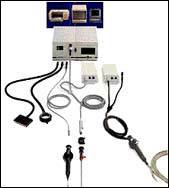Case 1
- Introduction
- Causes of Defects
- Good Practices
- Standards
- Maintenance and Diagnostics
- Remedial
- Similar Cases
- References
Maintenance and Diagnostics
Maintenance
Identify tell-tale signs of moisture entry/rising dampness (e.g., wetness, staining, darkening due to trapped moisture, discolouration, efflorescence deposits). Diagnose rising dampness through surfacebreaking flaws with a liquid penetration test. To remedy rising dampness, expose lower surfaces of
the façade and allow drying; then damp-proof and provide additional drainage in accordance with ASTM
C1496, BS 8298-1 or equivalent.
Masonry requires periodic maintenance to ensure its continued successful performance.
Although the brick units are quite durable over time, other materials in the wall system will require periodic repair and/or replacement.
Typical maintenance items which should be addressed are repairing of cracks in masonry, cleaning clogged weep holes, removing stains and efflorescence, repainting steel, replacing caps or copings, repointing mortar joints (tuckpointing), replacing deteriorated sealants and caulking, and cleaning the masonry.
Cleaning Existing Masonry
There are four cleaning techniques for existing masonry.
Diagnostics of Defect (see also NDT)
Fibrescope / BorescopeA fibrescope or a flexible borescope is a flexible optical inspection device that consists of fibre optic bundles with an eyepiece at one end and a lens at the other. A fibrescope usually comes in two bundles: (i) a fibre optic light bundle that is for illuminating the object to be investigated, and (ii) a fibre optic image bundle to relay the image to the eyepiece. It allows a direct visual inspection for an otherwise inaccessible part, as observations of remote, difficult-to-reach areas can be made through a video monitor with high-resolution images. The flexible fibres allow it to be manoevred in hard-to-reach or inaccessible areas.It is often used to verify findings from other tests, such as infrared thermography or impact-echo testing.Common applications include:– Inspection of connecting condition behind the external cladding wall of a building.– Inspection of defects on concrete surface(s) in a deep and narrow gap.– Determination of corrosion condition of steel tendon(s) inside post-tensioning ducts of pre-stressed structural member(s).– Investigation of service pipes, ducts and other inaccessible areas.



Thermography can be used to identify the position of cracks. A range of crack widths, representing mechanical damage, has been induced under controlled laboratory conditions. The method is based on the characteristics of heat flow phenomenon, in a conductive medium of specific geometry, which is intended to model predetermined boundary conditions.

Microwave tomography is a technique to measure the moisture of various materials based on the relatively high dielectric constant of “water” in comparison to the dielectric properties of the material. An electrical field (microwave) is applied to the material, and the microwave induces oscillations of bipolar molecules (i.e., water). Water molecules will reflect and absorb an electrical field during oscillations. A higher electrical field reflected indicates higher water content.
The technique is non-destructive and applicable to wood, brickwork and concrete. The uniqueness of this technique is its ability to measure moisture content at various depths up to 110 mm, allowing the plotting of a 3-D contour of moisture content and facilitating the tracing of the water source.
